
Back to Blogs
Discover
Where to See Snowdrops in Bury St Edmunds and Beyond
Welcome the first signs of spring with a walk amongst the snowdrops in Bury St Edmunds & Beyond...
Nowton Park
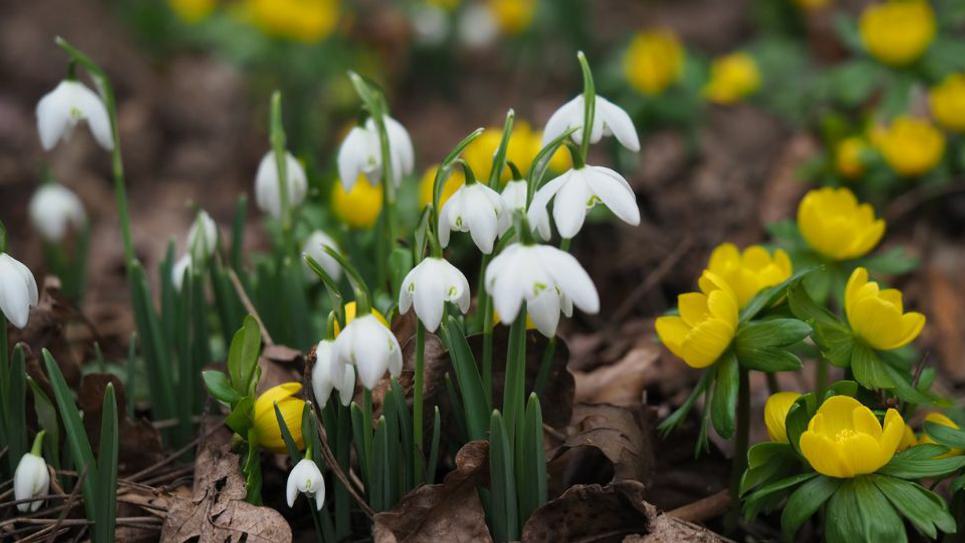
Photo: Nowton Park
Nowton Park is known for its carpet of daffodils during the spring, but first come the snowdrops!
With almost 200 acres of landscaped Suffolk countryside there is something for everyone at Nowton Park.
Nature lovers can visit the unique arboretum which is home to trees from around the world such as eucalyptus from Australia, paperbark maple from China and Kentucky coffee trees from North America. A panda was carved in 1998 and placed in the China region along with some bamboo to add to the vision of this geographical area. The Nowton Park totem pole stands 35.4 feet (10.8m) tall near the centre of the North American region of the arboretum. It is carved from a western red cedar which is the species traditionally favoured by Native Americans for their totem poles.
The lime avenue is one of the finest examples in the UK and was planted around 1880 to give the estate a sense of grandeur. In spring over 100,000 daffodils bloom beneath the trees.
The park is also home to a large play area, football pitches, a picnic area, cafe and visitor centre.
Fullers Mill Garden
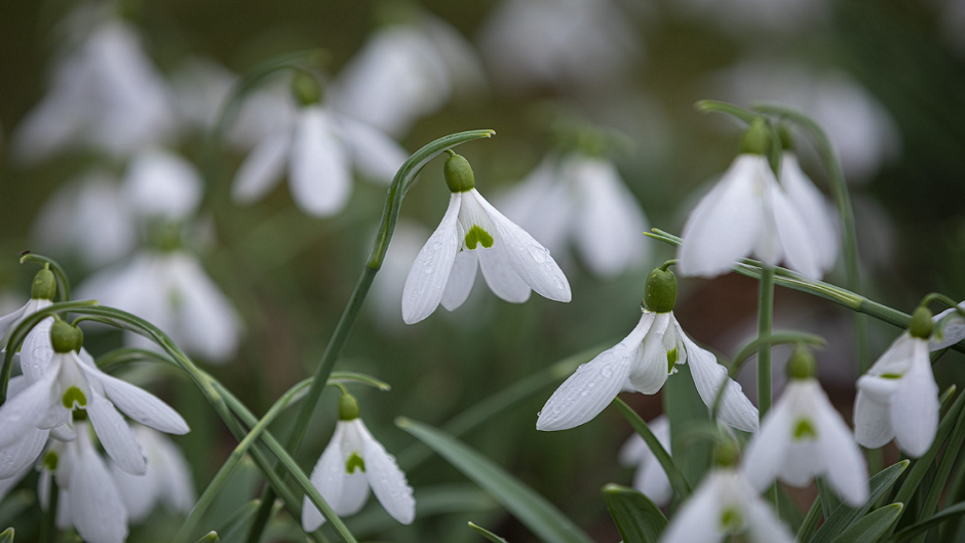
Fullers Mill Garden run Snowdrop Open Days in February.
With Snowdrop experts on hand to answer your questions, home grown plants are available to purchase and hot drinks and delicious cakes will be for sale in the Bothy Tearoom.
For details of Snowdrop Days visit the Fullers Mill Garden website.
National Trust Ickworth
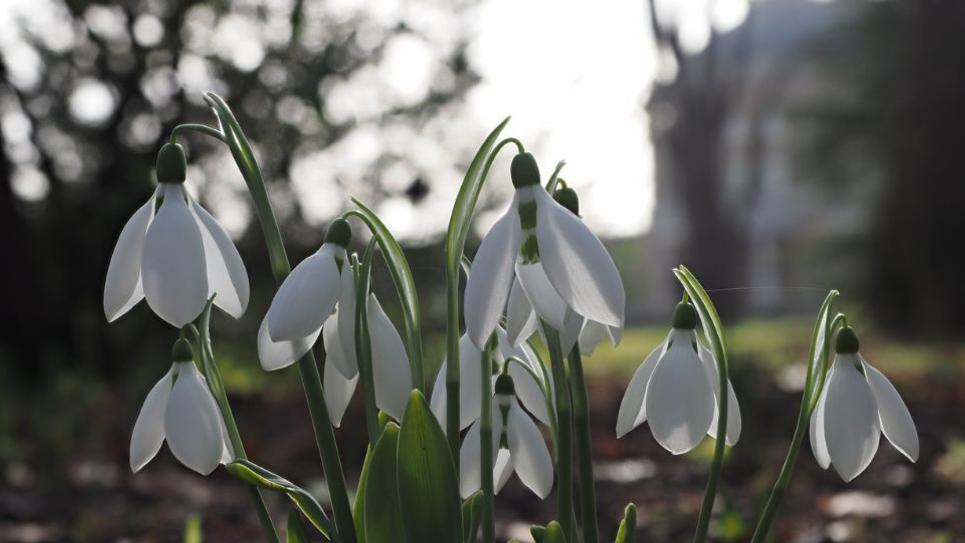
Photo: National Trust Images
You can see carpets of snowdrops along Geraldine's Walk at National Trust Ickworth.
Traditionally flowering between January and March, snowdrops are one of the first signs of life in Ickworth's gardens after winter. But did you know there are a variety of snowdrop species at Ickworth which flower at different times of the year? This means you can see snowdrops between October and April.
A little known fact from National Trust Ickworth's team. Did you know that snowdrops were harvested during the first world war for their antifreeze properties? It was used in military vehicles as a de-icer for window screens.
There are two main snowdrop varieties that you can see at Ickworth Estate. Galanthus nivalis is the most common of all the snowdrops, flowering from January and growing to around 7 - 15cm tall. Galanthus elwesii is larger than the nivalis and flowering slightly later, these snowdrops originate from Turkey and grow to around 20 - 25cm tall.
Ickworth is a Georgian Italianate palace in an idyllic English landscape. You can't miss Ickworth's impressive Rotunda - a magnificent showcase commissioned by the 4th Earl of Bristol to house his priceless treasures collected on tours around Europe in the 18th-century. The parklands and gardens are beautiful and you can easily spend a whole day here walking, cycling, and exploring!
Find out more about snowdrops at the National Trust Ickworth website.
Kentwell Hall
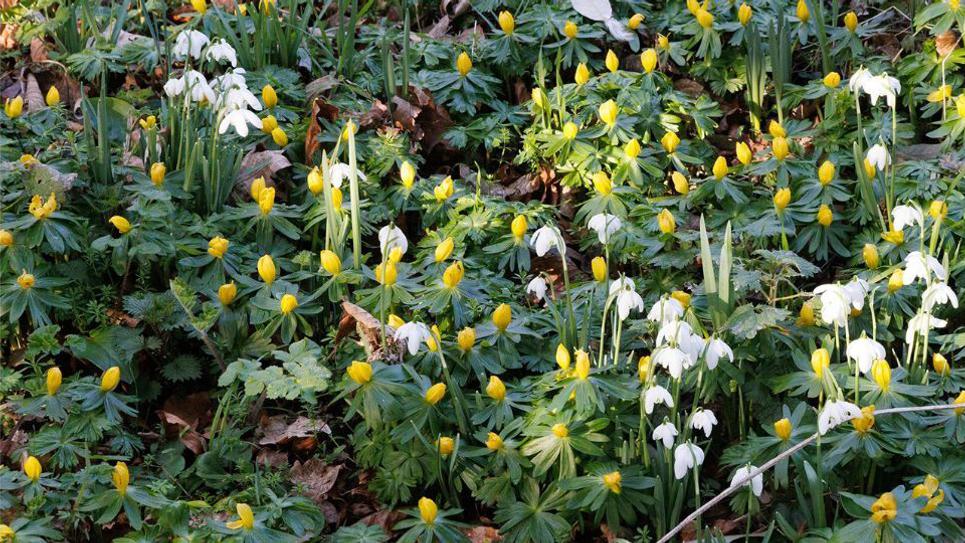
See snowdrops and yellow aconites in The Shrubbery and Back Wood at Kentwell Hall
Snowdrop days at Kentwell Hall in Long Melford take place in February.
Kentwell Hall is Suffolk’s hidden gem and one of England’s finest Tudor houses that stands within the most extensive moat in the county and nearly 30 acres of formal gardens and grounds.
The Shrubbery and Back Wood are carpeted with Snowdrops and pockets of yellow aconites but there's also spring bulb walks, family trails and a chance to enjoy their lovely tearoom.
Find out more at Kentwell Hall's website.
Abbey Gardens
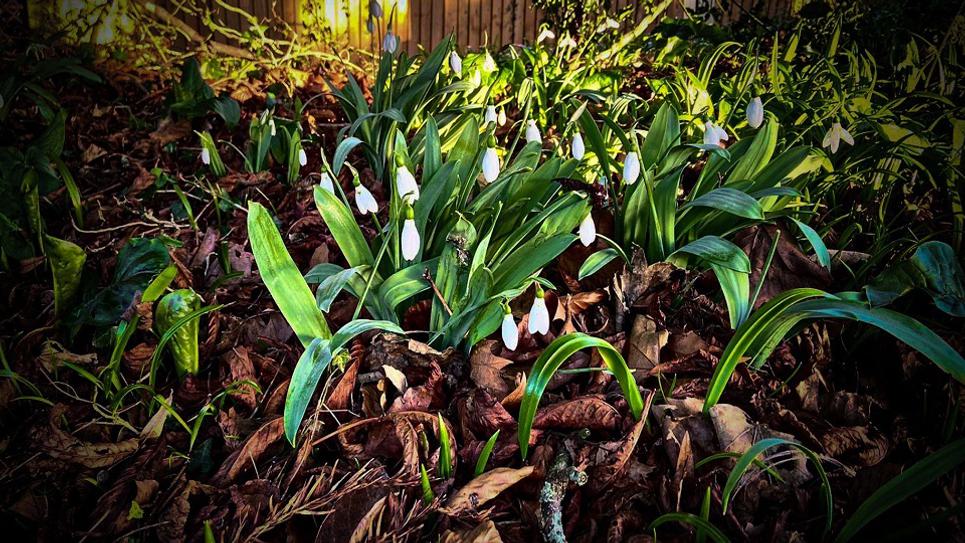
Photo: Mike Kirkham
You can find snowdrops near to the riverbank near the Abbey Gardens in Bury St Edmunds.
A wander along the riverbank when visiting the Abbey Gardens is a must. The beautiful River Lark runs along the eastern side of the Abbey Gardens and provides a picturesque walk whatever the season. The Abbey historically used the river as a power supply and trading route.
You can also find snowdrops at The Great Churchyard between St Edmundsbury Cathedral and The Norman Tower and St Mary's Church.
Snowdrop Events
Related Blogs

News
Festive Winter Walks
Get outside and enjoy the fresh crisp winter air with…

News
Where to Go Pumpkin Picking…
Autumn fun, fresh air, and fields full of pumpkins in…

News
Bury St Edmunds Parks Awarded…
The stunning Abbey Gardens and Nowton Park have both…

News
Summer Walks
Make the most of the sunny days and warm evenings and…

News
Perfect Picnic Spots
With stunning countryside and gardens, there are many…
Latest news

News
How to Spend Betwixtmas in Bury St Edmunds & Beyond
The post Christmas period is the perfect time to get out and about before the new year kicks in, and you’ll find plenty of activities and places to visit in Bury St Edmunds and beyond.

News
Parents Guide to Pre Christmas Entertainment
It's the school holidays and with Christmas just around the corner we've put toegther a guide on places to take the kids to keep them entertained until Santa visits!

News
Enjoy a Festive Afternoon Tea in 2025
Celebrate the Christmas season with a festive afternoon tea in Bury St Edmunds & Beyond...

News
Festive Winter Walks
Get outside and enjoy the fresh crisp winter air with one of these walks in Bury St Edmunds and Beyond!

News
Bury Tour Guides to launch new tours next year after successful 2025
Bury St Edmunds Tour Guides to Introduce new tours in 2026 and continue the successful Food and Drink Tours!

News
New in Bury St Edmunds For 2026
A sneak peak into new attractions visitors can enjoy in Bury St Edmunds in 2026.

News
Baby It's Cold Outside... Things To Do When the Weather Turns Frosty
Just because the temperature’s dropped doesn’t mean the fun has to! If you’re visiting town during the chillier months, there’s still plenty to see, do, and experience.

News
Places to sit by a roaring fire in Bury St Edmunds & Beyond
Warm up by a roaring fire this winter in Bury St Edmunds & Beyond...

News
Christmas Park and Walk 2025
Additional parking has been provided by West Suffolk Council in partnership with Greene King this Christmas.
